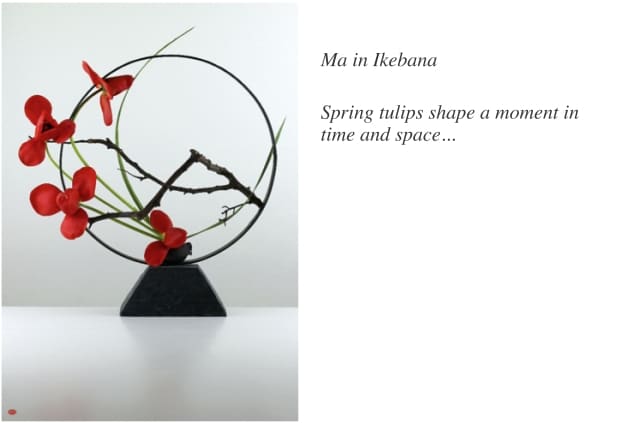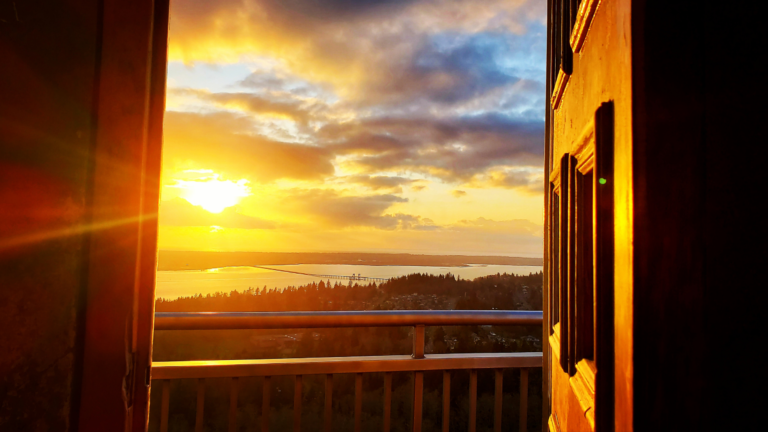Ma
Published 30 November, 2021
The day is warm and just like any other day in his childhood. At the local park he makes a circuit of his favourite playground equipment, with the swift calculations of a young child weighing up waiting times versus pleasure.
Suddenly a swing is free and he dashes over. Gets settled, pushes back on tip toes then off – leaning forward and arching back, stretching and tucking his legs – until the swing reaches its optimal height, either just before or just after the frame begins to lift out of the ground!
Amidst pleasure in the rush of each movement, he notices a moment of stillness at the top of each arc. Suspended in the air and in time, the briefest interval between the rise and fall.
This is how I was introduced to the Japanese concept of ma a few months ago; a word I didn’t know I needed, but helps to make sense of this year.
In early January 2021 it was announced that the UK would be returning to lockdown. Unable to face another indefinite period of school closure, my husband and I decided to it was time to visit family in Australia. Although we would be required to spend 14 days in hotel quarantine on arrival, schools were open and we’d have parenting respite in the form of doting grandparents and aunts. And after 13 deeply satisfying years in London, it also gave us the opportunity to experiment with the idea of being Australians who lived in Australia.
By April we’d reached the decision to relocate our family to Melbourne for the longer term, but making that a reality was rather daunting. It would entail returning to the UK mid-year, closing out our lives there and saying goodbyes, and flying back to Australia again – all within the context of the ongoing pandemic.
How do these two stories connect to the concept of ma and why am I writing about it? Let’s take a look at the Kanji character for ma.

The interval
The Kanji character is comprised of two elements, the first being pair of gates which mark a pause or negative space.
In her video describing ma, Silkroad percussionist Haruka Fujii is just as interested in the space between the sounds as the sounds themselves, and suggests that exploring the nature of this space can help us better understand our every day lives. In this blog I avail myself of her invitation and take the liberty to bring my own interpretations and associations to a concept which I recognise is deeply entwined in Japanese culture.
Like bookends on a shelf, the decision in April 2021 began my family’s relocation process and it will end (perhaps) when we are settled into a new home in February 2022. In between there’s an interval of ten months or so where we are floating without an anchor to a place that feels our own.
This interval is a liminal space, between the thresholds of the life that was and what our new life will be. In practical terms it’s mostly a faff or a hassle, depending on your dialect – constantly assessing our possessions in terms of weight, volume and value (however that’s defined), paying double school fees, navigating diaries across an eleven hour time difference, and buffering the exuberance of a five year old as we co-habit with family and friends.
I’ve written previously about thresholds of change in our lives and how they contain invitations to explore new territory – territory that requires us to deepen our tolerance for discomfort. As a third culture kid I’m familiar with the discomfort of transition, but ma isn’t just about intervals and thresholds.
There’s a surprise that changes everything.
The second element in the Kanji character is the sun, front and centre between the doors.
The crack where the light gets in
Close your eyes for a moment as I invite you to immerse yourself in a memory of sunshine through a doorway.
It might be Winter sun, low and pale, gently warming your skin and nourishing your bones. It might be intense Summer sun, piercing through a crack in the shutters, penetrating the cool darkness beyond. It might be throwing back bi-fold doors to behold the glory of a technicolour sunrise, extravagant and unrestrained, washing the room with golden light.
Whatever arises, sit with this memory for a minute.
I invited you first to an experiential moment of literal sunlight, because as I’ve shared previously, metaphors in language arise from our embodied experiences of the world around us. Metaphors are also gateways to deeper and richer meaning through the threads of association they weave together. When following these threads of association, it’s helpful to recognise that certain aspects are unique to each person’s experience, while many are shared within cultural groups and a few are considered universally understood.
With this memory of sunlight through an opening fresh in your mind and body, consider ikebana – the Japanese art of flower arrangement. In the image below ma is seen literally in the framing of a space for light to shine through, as well as conceptually with the precision in which organic elements balance with the negative space. The result is a beautiful arrangement exceeding the sum of its simple parts.

Image and arrangement credit: Donna Canning
The notion of light through space is also present in Western culture, referenced by authors and poets such as Ralph Waldo Emerson, Benjamin Blood, Ernest Hemingway and Leonard Cohen as the light that shines through cracks or brokenness. Their words evoke a profound sense of the transcendent beauty inherent in our imperfections.
I’m beginning to wonder if behind ma lies the essence of a universal metaphor.
An emptiness full of possibilities
I’ve come to understand over the last few months that ma is a space to sense and to feel. It’s the space between what goes and what comes. A pause, full of the sensation of potential energy but with no particular outlet or direction implied. Like the apex of the swing – at the top of the arc but not yet coming back down. On the brink of what is next, and yet a moment in time which is brim-full of beauty in its own right.
Ma invites us to experience the richness of now, to let the threads of the past and the future speak into a common space, for both the parts and the emptiness to be seen in the context of a larger and more beautiful whole.
Attending to the crack
Universal it might be but easy it isn’t, especially within societies where the vulnerability of cracks and the discomfort of stillness are generally avoided. It requires a learnt skill.
Cracks and brokenness show up in our lives in a variety of places and ways. I have cracks that are shallower and some that I may live with my whole life. Most of them I’ve come to know since becoming a parent. Learning to pay gentle attention to them has – without exception – allowed more light to enter my life and the lives of those close to me.
However, attending to the crack isn’t just about acknowledging the hurts of the past. As in the balance of elements in ikebana, the crack speaks to us of both the past and the future. Otto Scharmer and Katrin Kaufer write in ‘Leading from the emerging future’, “’Attending to the crack’ means attending to the openings, the challenges, and the disruptions where we feel the past ending and the future wanting to begin”.
Textures of now
In terms of my family’s transition, the crack between between our past and our future contains both loss and possibility, grief and joy. Susan David’s words illuminate this space so beautifully: “Life’s beauty is inseparable from its fragility. Live and breath into that balance.“
Over recent months ma has helped me occupy this space between the past and the future with more ease. I can’t say I unreservedly recommend a ten month transition when relocating halfway across the world with a small child, but I am genuinely grateful for the opportunity to experience so many textures of ‘now’ in this interval of apparent emptiness.
Standing here between the gates I can feel the warmth of the sunlight on my face. The morning breeze carries the scent of the emerging future – and it smells of eucalyptus.

Notes and acknowledgements
- My appreciation to Charles and Jung Starrett who were facilitating the u.lab hub in which the original swing description of ma was shared by another participant. Every hour spent with them is a gift.
- I shared an image of an arrangement by ikebana artist Donna Canning, who wrote a longer article on ma in Japan’s traditional arts and architecture. She also recommended Pico Iyer’s TED talk ‘The art of stillness’ which really hit home for me as an ex-frequent traveller.
- This was another good article, on ma and minimalism.

